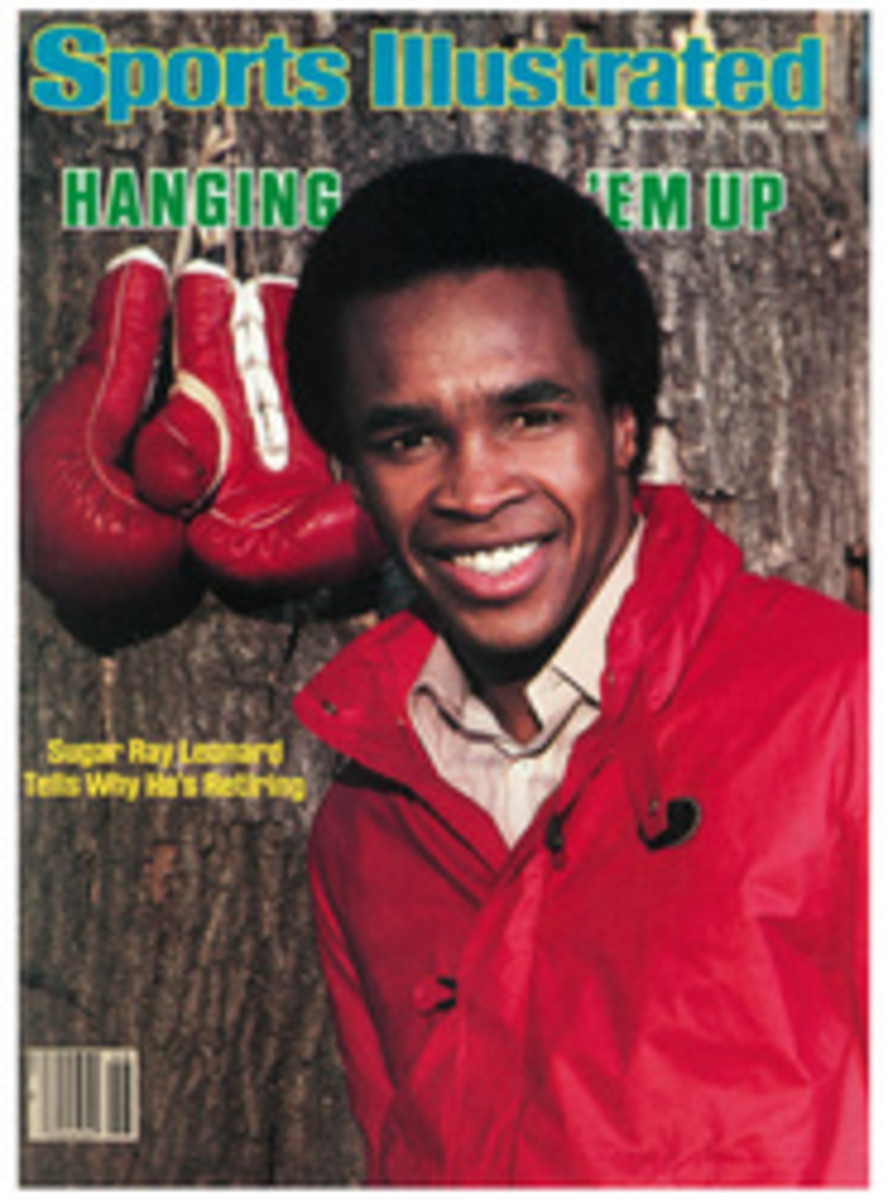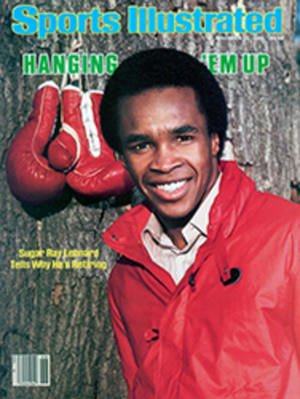
A MARATHONER HAS A WILD TIME WITH A COUGAR, A BEAR FAMILY AND A GOAT
Late last April, in preparation for the Western States 100 Mile Endurance Run in June, I began going on long, slow, weekly training runs through the southern Oregon mountains—sessions of from seven to 12 hours that covered as many as 60 miles. I'd fully expected that such extended periods of time alone in remote and rugged country would bring on extremes of emotion: waves of exaltation, bouts with self-pity and, most predictable of all, great stretches of excruciating boredom.
But it turned out that the training runs were far more eventful and exciting than I'd imagined they would be. I have no idea what caused it—heavier than usual snowpack at higher elevations, the glorious weather that came unexpectedly in early spring, a sharp upturn in wildlife populations or, most likely, mere coincidence—but I had more close encounters with animals than I'd experienced during the previous 15 years of hunting, hiking and running through the same mountains.
The first encounter occurred on a cool, sunny morning in early May, when I heard a cougar scream. I was just below the snow line in the Siskiyou Mountains, more than halfway along on an eight-hour 50-miler. About 60 yards ahead of me the trail curved sharply around some huge gray boulders that were piled at least 40 feet high. A large, nervous-looking doe came out from behind the boulders, looked back, hesitated for a second, and then, crossing the trail, bounded down a steep slope through a thick stand of Douglas fir. I could hear the hooves, like muffled drumbeats, on the forest floor. When I reached the spot where the doe's tracks crossed the trail, I stopped to look, but she was already out of sight in the shade of the trees below me. It was then, when I stopped and turned my back to the boulders, that I must have come between the cougar and its meal.
When the cat screamed, I jumped at least a foot off the ground. I glanced down at my forearm—I don't really know why except that I felt a tingling sensation there—and saw large goose bumps under a film of sweat and the hairs standing on end. Though I'd been running effortlessly over fairly level terrain for at least an hour, my heart was suddenly pounding loudly in my ears.
The scream lasted four or five seconds, and it sounded something like a hysterically shrieking woman. But even louder than that. It was primitive, a shrill, high-pitched screech that became higher in pitch as it increased in volume. Soon my ears were ringing, as if I'd been standing too close to an explosion, and just as I turned in the direction from which it was coming, the scream, at its highest pitch, stopped as abruptly as it had begun.
I never saw the animal. I think I saw where it had been, in a narrow, shaded crevice in the boulders about 20 feet above me.
For a few seconds after the shrieking ceased, I was aware of my vulnerability in ways that I'd never thought of before. Unprovoked cougar attacks on men are rare—though there have been a number of recorded incidents involving children—but I wasn't sure if coming between a cougar and his dinner was provocation or not. I was acutely conscious of my quick, shallow breathing, of the throbbing in my veins, of tired, insubstantial muscle over bone and of damp, fragile skin. I turned and ran on.
But my instinctive, momentary fear was quickly transformed into elation. By the time I got home—and the running seemed easy the whole way—I realized that from now on I wouldn't regard the lonely countryside as quite so lonely any more.
A week later I took another trail and began my run at 6 a.m. By eight I was near the end of a gradual 10-mile climb in the Cascade Range that would level off at an elevation of 5,000 feet. Already during the long climb I had seen a pileated woodpecker, several deer, some blue grouse and a family of mountain quail—two adults and at least eight half-grown chicks.
It was ideal running weather, cool and clear and with a slight breeze blowing out of the west, and the trail was due west, so the bright morning sun was directly behind me. I was daydreaming when I ran into the mother bear and her two cubs, and it was the direction of the wind and bright sun—combined with bears' poor vision—that allowed me to get as close as I did without them picking up my scent. When I spotted the first cub, it was standing sideways to me, in the shade at the edge of the trail only 20 yards ahead looking down over the edge into the forest. I stopped in my tracks, and then I saw the second cub, just behind the first, facing me, staring straight in my direction, apparently blinded by the sun.
What little I knew about bears sped through my mind. The young had probably been born in February. These two cubs were thick-furred and the color of cinnamon—a common hue for the American black bear—and looked to weigh about 60 pounds. Their mother was undoubtedly nearby, and I knew that she was the only real danger. I considered backing up to reduce the possibility of coming between a she-bear and her young.
As that thought occurred to me, the mother appeared on the trail, just in front of the first cub. She grunted once softly, and the three of them began to walk straight at me, with the she-bear, also cinnamon-colored and weighing a good 250 pounds, leading the way. I'd never been so close to a bear in my life, and when the mother was 10 yards away, I knew that it was close enough. This time, when I turned and ran, it was out of fear.
But I needn't have worried. Looking back over my shoulder, I saw the mother stop and look at me, staring hard, leaning forward, apparently more curious than frightened or angry. The two cubs stood on either side of her, and they were watching me, too.
When I had put at least 30 or 40 yards between us, I stopped again, turned and watched as the mother used her long snout to nudge the cubs into the forest through which the trail was cut. They then sprinted down a slope between the trees. Their mother galloped behind the cubs, and after they were out of sight, I still heard them crashing through the underbrush.
The image of the solicitous mother herding her young off the trail stayed with me during the rest of the run—and through the week that followed. On the very remote chance that I might see the three of them again, I took the same route at the same time on my next long weekend run.
There was no sign of the mother and cubs, but I may have—almost literally—run into the father. I was going down a long, gradual decline about three miles beyond where I had seen the cubs and their mother the week before, when I saw a large, solitary bear about 100 yards away. Even at that distance I was sure that it was too big to be a female. He was walking slowly along the trail in the same direction I was, unaware that anything or anyone was near him. I slowed down to watch, keeping my distance. After half a minute or so, as the bear rounded a bend, I ran hard to close the gap. I wanted to reach the bend as quickly as I could for a better look. I calculated that if the bear kept his lazy pace, I would be within 25 or 30 yards of him when I made the turn myself. Perhaps the bear heard my footsteps, or it might have been chance, but, whatever the explanation, once around the bend, he had turned and started back toward me.
When I saw him, I braked to the fastest stop I've ever made, and even then there were barely two yards of trail between us. I was close enough to smell him. He was huge and handsome, with a thick, lustrous, deep brown coat that had a light patch high on the breast. His ears popped forward as his dark eyes stared into mine.
Though I was too startled to move, my mind was working. I didn't think I was in danger. He didn't seem to be angry or curious, or especially frightened about me, either. On the contrary, to me he looked amused. He gazed straight into my eyes, heaved a great sigh, turned without haste to my left and lumbered off into the trees, over a grassy little hill with a large rotting log on it. The muscles under his coat moved the gleaming hairs the way a field of ripe grain is rhythmically stirred by wind. He didn't hurry, never looked back and was out of sight in seconds. I was alone in the mountains with yet another vivid memory.
The experience that came closest to causing me bodily harm didn't involve a cougar or a bear. On a 17-mile run through some steep, rocky hills near my home in Ashland, I was chased off the trail by a belligerent goat.
Wild goats are highly uncommon in southern Oregon, which is why I didn't believe I was seeing one standing 15 or 20 yards up the trail from me. I was near the end of a climb through jack pines, manzanita and poison oak, and it was warm—at least 85°—and sweat was running into my eyes. For several minutes I had been staring down at the dusty, rock-strewn trail in front of my running shoes, and when I glanced up to assure myself that the top of the hill wasn't far off, there the goat was, bearded, white-coated and impressively long-horned, glaring at me. I wiped the sweat from my eyes, blinked, and looked again. He was still there. I foolishly kept running, unable to comprehend what my eyes saw, and when I was 10 yards away from him, he charged. He sprang forward, landed on all fours, then lowered his head. His horns were at the level of my stomach as he barreled down the hill.
Just in time, I jumped to my left over a manzanita bush, slipped on some loose stones, landed on my side in poison oak, scrambled up and circled behind the nearest pine tree. When I looked around the tree, the goat was standing in the trail exactly where I had left it, glaring at me over the manzanita bush, head half lowered in what appeared to me to be a challenge.
It wasn't a challenge I cared to meet, so I avoided the trail and found my way through the brush and trees to the top of the hill. I looked back from time to time, and the goat, though he didn't move, watched me all the way.
Half an hour later, coming down the trail toward home, I was prepared to make another sudden detour if I had to. But the goat had vanished. He must have been a feral animal, probably an escapee from a farm in the Rogue River Valley a few miles away. The next time I run that trail, he won't surprise me, and neither will anything else I encounter, there or anyplace else.
ILLUSTRATION
KEITH BENDIS

